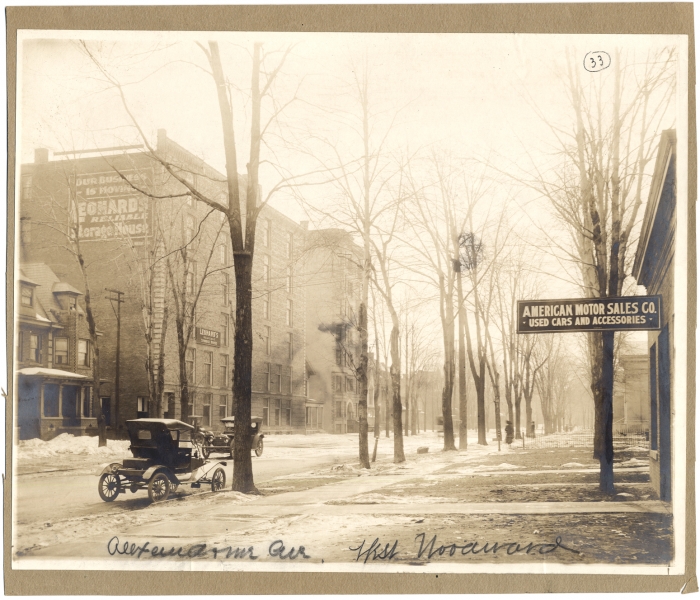Local history and architecture nerds, rejoice!
While doing some web research on A.C. Varney, the original architect of the El Moore (1898), we discovered a remarkably detailed document about the history of our neighborhood that we’ve never seen before. We thought you might like to have a look, too.
The unassumingly titled Historic and Architectural Resources of the Cass Farm Survey Area, Detroit, Wayne County, Michigan is a treasure trove of information about “Cass Farms,” more commonly known today as Midtown or the Cass Corridor, the storied Detroit district bounded by Warren to the north, Woodward to the east, MLK Blvd. to the south, and M-10 to the west.

The author of this meaty, “intensive level survey,” one Gretchen Griner of local economic development firm Zachary & Associates, apparently prepared it in 1997 for the US Department of Interior, which oversees the National Register of Historic Places. Sometime in the years since, much to our delight, it was scanned and made freely available online.
“The Cass Farm Survey Area,” Griner begins, “has merit as one of Detroit’s most important areas historically because it reflects the growth of Detroit as an industrial city.” She continues:
Located just one and one-half to two miles north of the Detroit River, it was the place where the first wave of self-made, truly wealthy Detroiters built their homes, and later where new arrivals seeking jobs as a result of the thriving industrial-based economy first settled. Once the center for automotive showrooms and suppliers, the Cass Farm survey area never quite recovered from the Great Depression; consequently, its architectural resources remain as a capsule in time from the most significant years in the development of the City of Detroit, with consequences for the whole region.
The report’s 56 pages are brimming with information about the neighborhood’s built environment, population, transportation, economic fortunes, and educational and spiritual institutions, reaching from the early 19th century through the 20th.
We were especially excited to learn, among much, much else, a couple key facts related to our favorite local architect, A.C. Varney:
- He was the most prolific residential architect in the neighborhood, responsible for designing 14 (or 18%) of its 78 residences.
- 4470 Second Ave., built in 1883, is the oldest surviving Varney house in the neighborhood. (Located one parcel north of the Green Garage, the Queen Anne-style building was home to the beloved Zoot’s coffee shop in the 1990s, and is currently an apartment residence and the HQ of our friends at Model D.)
- Most strikingly, the report asserts that, though he was better known for his single-family residences, “The development of the apartment building as an acceptable housing type in Detroit was due to Almon C. Varney.” His (now lost) four-story Varney Apartments, built in 1892 in what is known today as Foxtown, was the first such apartment building built in the city, and apparently it was quite a gamble: Varney’s friends thought that Detroit’s population wouldn’t support this new style of housing, which originated on the east coast. Varney was ahead of the curve, though; the building made him a fortune and inaugurated the spread of this popular new housing type in the neighborhood and around the city.
Anyway, there’s so much more to learn from this rich survey of our ever-changing neighborhood, so take a look! We trust you’ll find it as illuminating as we did.
